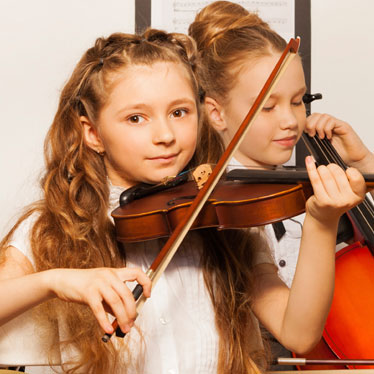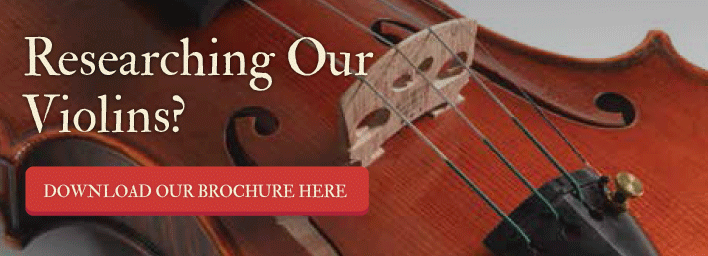What Makes a Good Violin for Beginners?

When you’re looking for a violin for a beginner, it isn’t always easy to know exactly what features to use for comparing instruments. Price is a deciding element for most buyers, and depending on your budget, you’ll obviously want to get the most for your money. However, when you choose a violin, certain aspects impact how well a beginner is able to perform on the instrument, and how well the instrument sounds being played by a beginner.
Essentially, new students need encouragement when starting off with a new instrument, especially one as challenging as the violin, and there are certain features that will help deliver success. The features that determine whether or not a violin is a good one for beginners are similar to the aspects that distinguish any great violin and knowing how to recognize them will ensure that you choose an instrument suited to a beginner’s needs.
The Right Size
The most important factor in a good violin is the proper size. It won’t matter if a larger, perhaps better quality instrument is on sale, if the violin is too big it will cause all sorts of playing difficulties, not to mention the very serious health risks involved in playing a violin that’s too big.
If you’re looking for an instrument for small children, don’t make the mistake of thinking that the child will “grow into it.” Choose the right size violin to ensure that the student’s physical strength and posture are benefitted from learning to play, not harmed.
Violin Materials
All of the materials used to create a violin have a combined effect on the quality of the sounds generated and how easy or difficult it is for beginners to create great sounding music, from the woods used in fabrication to the strings you choose. Beginners need to be able to develop intonation as early as possible—the ability to recognize correct pitch—but that can be difficult on inferior quality materials.
Beginner violins should be constructed of Spruce, Maple, and other quality woods; and the joint areas, especially around the neck, peg box, and scroll should be smooth and flawless. Don’t be afraid to look closely at manufactured violins. These instruments are more affordable than hand-crafted models, but vary in quality.
Ideally, you’ll want to obtain the best quality violin for lowest possible price. Look for solid woods, joined tightly, in an instrument that has good symmetry. These factors determine the quality of sound, and the better it sounds when played, the more likely the student will be to continue learning this valuable skill.
Also, make sure that the beginner instrument is fitted with fine tuners on all of the strings. They make it much easier to learn to tune the violin.
Strings and Accessories
To achieve the best sound, beginners should start with perlon (a type of nylon) or synthetic core strings, if possible. Steel core strings, while being wonderful for certain genres of music, aren’t necessarily associated with the warm, rich tones the violin is generally recognized with; so spending a little more for these type of strings is totally worth it. The new Alphayue strings by Thomastik-Infeld are great beginner strings - synthetic core strings at a steel core price. More advancing players gravitate towards Dominant. Moreover, the synthetic core stays in tune longer, so students can practice without having to stop to make frequent tonal adjustments.
The type of bow used also effects how easy or difficult it will be for beginners. Because the bow is naturally fragile, it’s tempting to want to choose the least expensive. However, it’s important to select a bow that will bring out the best in the student and the violin. Carbon composite and carbon fiber bows are great for beginners because of their combined agility and strength.
Typically, the features that make a great violin for a beginner are also the features that determine the cost. You can get a great beginner outfit (which includes a hard case, superior carbon fiber or Brazilwood bow, rosin and quality wood instrument) for about $600.
Although you probably won’t hit the jackpot and find an exceptionally crafted violin for next to nothing at some obscure flea market or garage sale, at least you’ll know what to look for if you happen to come across one. And in the meanwhile, you can shop with confidence and find a quality crafted violin that will encourage any beginner.

